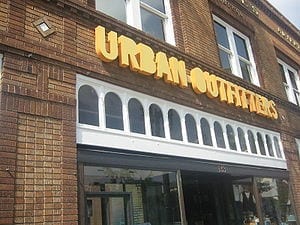It seemed like a no-brainer.
DMITRI SIEGEL, until last year a marketing executive at Urban Outfitters, thought he had hit on a novel idea to personalize the company’s Web site for frequent customers. He would make it easier for female shoppers to peruse women’s apparel and for men to concentrate on men’s clothing by altering the site’s product displays to match a user’s gender.
It seemed like a no-brainer.
“If you could just stop marketing dresses to men, it would be amazing,” Mr. Siegel said last week about his thought process at the time.
With the help of a Web site testing and optimization company called Monetate, Mr. Siegel experimented with gender personalization on the site. But it roundly backfired. It turned out that many female Urban Outfitters customers regularly bought men’s items and they took offense at being subjected to gender-based marketing.
“We saw customer frustration at being targeted outweigh any benefit,” said Mr. Siegel, now the vice president of global e-commerce at Patagonia. “If you got it wrong once, it outweighed getting it right 10 times.”
Amazon may have introduced product recommendations tailored to individual customers years ago, but greater personalization is now fine-tuning the face of e-commerce with bespoke shopping experiences. Retailers look at customers’ locations, past purchases and current online activities to customize content to individuals in real time in an effort to increase sales.
The customization is often covert. Many people are unaware that sites may show them material or offer deals — like discounts or free shipping — that are different from what their neighbors see. Yet the phenomenon is growing. Half of the largest online retailers in the United States used some personalization techniques last year, compared with about 33 percent the year before, according to Internet Retailer’s Top 500 Guide. And e-tailers are turning to a handful of specialty software companies like PredictiveIntent, RichRelevance, MyBuys and Monetate to help them analyze customer data and segment their audiences for special treatment.
Tailoring sites to users can spur online sales, repeated site visits and in-store sales, says Kurt Heinemann, chief marketing officer of Monetate.
“That helps our clients increase revenue and creates more relevant experiences for customers,” he said. Users don’t have to click 10 times to find products they like, he added, because “the site is bringing things to them.”
But when personalization gets too personal, as Urban Outfitters’ executives learned, it can come too close for many consumers’ comfort. It turns out that hyper-customization may produce reactions similar to the “uncanny valley” effect in robotics in which people find themselves repulsed by humanoids that too closely resemble human beings.
If e-tailers become too familiar with users, they risk alienating them, says Mahender Nathan, the vice president for e-commerce and digital marketing at Godiva, another Monetate client. Personalization, he believes, should adhere to the conventions of in-person conversations.
“In conversation, if you think it’s odd that you know something about someone that they didn’t share with you, don’t use it,” Mr. Nathan said. “What we’re trying to shoot for is friendly, cordial and helpful as opposed to crossing the line and being creepy.”
via New York Times – Natasha Singer
The Latest Streaming News: E-Tailer Customization updated minute-by-minute








